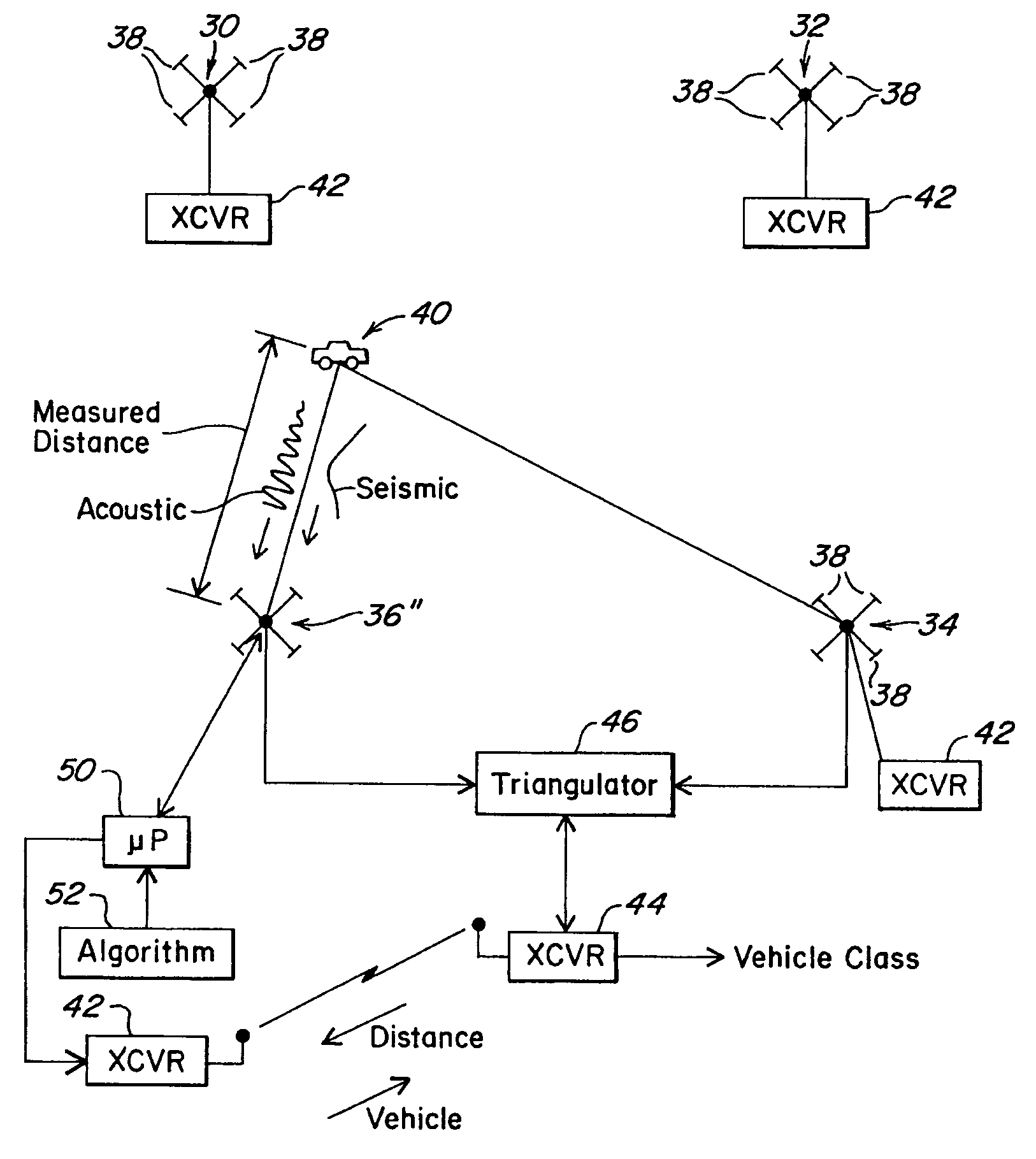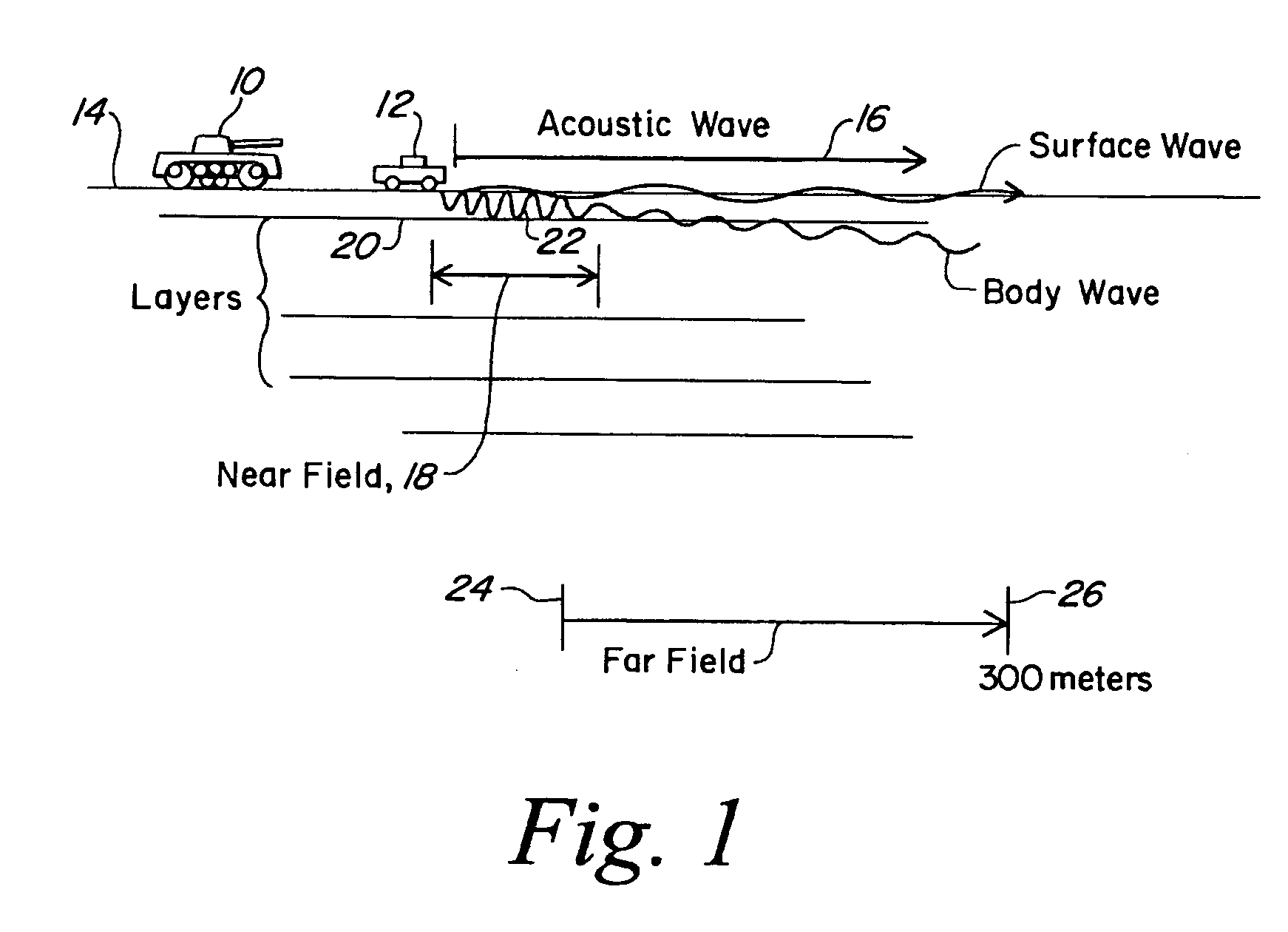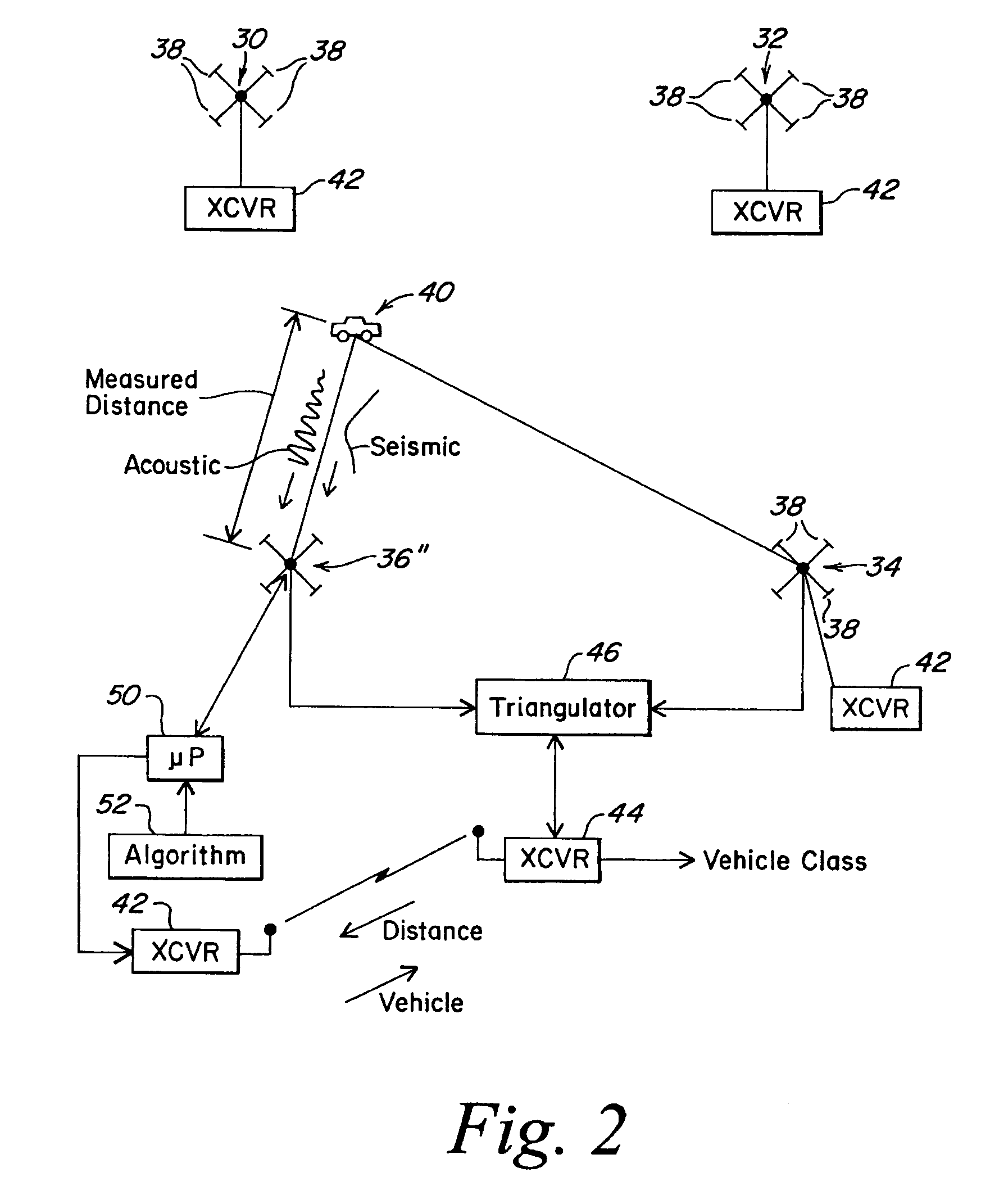Passive real-time vehicle classification system utilizing unattended ground sensors
a real-time vehicle and classification system technology, applied in direction/deviation determination systems, direction finders using ultrasonic/sonic/infrasonic waves, direction finders using ultrasonic/sonic waves, etc., can solve the problem of different seismic levels and signatures, the absolute value of the sound is more or less loud, and the sound pattern is not unidirectional. problem, to achieve the effect of eliminating spoofing or false indication
- Summary
- Abstract
- Description
- Claims
- Application Information
AI Technical Summary
Benefits of technology
Problems solved by technology
Method used
Image
Examples
Embodiment Construction
Referring to FIG. 1, a vehicle 10 which may be a tracked vehicle such as a tank, or vehicle 10 which is a small wheel vehicle such as a truck, as they traverse over the surface of the earth 14, produce acoustic waves such as illustrated at arrow 16 or two types of seismic waves. In the near field as illustrated by double-ended arrow 18 which may be out to 200 meters, the seismic energy is trapped between the surface and one or more layers 20 so that it reverberates in a channel as illustrated by body wave 22 which is diminished until it peters out at the start of the far field as illustrated at 24 which may be at 200 meters, with the far field extending, for instance, to 300 meters as illustrated at 26.
The acoustic wave extends outwardly from the vehicle and does not vary much in its properties neither in the near field nor in the far field.
In either case, both the seismic surface wave and the body wave decay in an exponential fashion depending on in the seismic case the type o...
PUM
 Login to View More
Login to View More Abstract
Description
Claims
Application Information
 Login to View More
Login to View More - R&D
- Intellectual Property
- Life Sciences
- Materials
- Tech Scout
- Unparalleled Data Quality
- Higher Quality Content
- 60% Fewer Hallucinations
Browse by: Latest US Patents, China's latest patents, Technical Efficacy Thesaurus, Application Domain, Technology Topic, Popular Technical Reports.
© 2025 PatSnap. All rights reserved.Legal|Privacy policy|Modern Slavery Act Transparency Statement|Sitemap|About US| Contact US: help@patsnap.com



